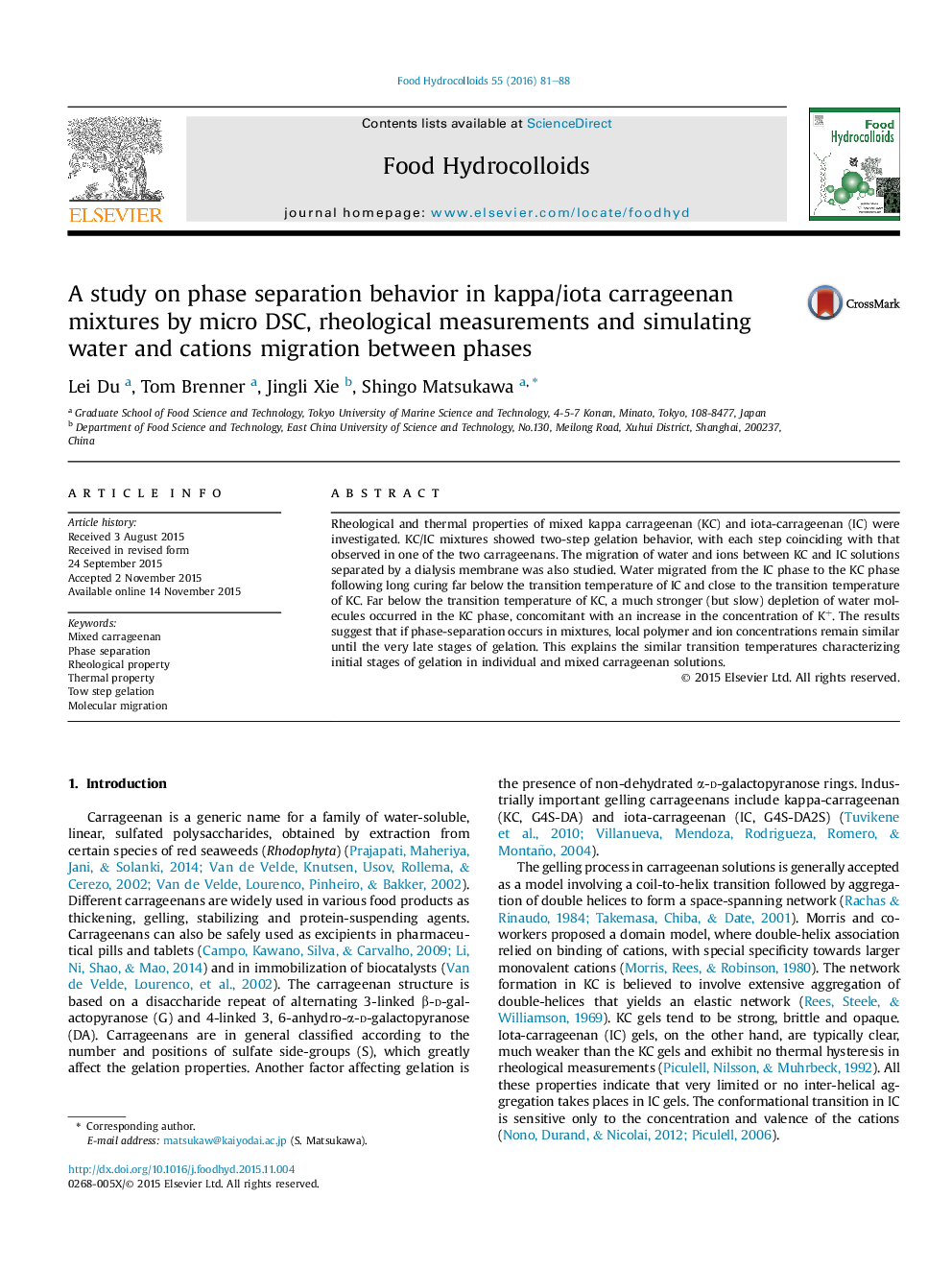| Article ID | Journal | Published Year | Pages | File Type |
|---|---|---|---|---|
| 603656 | Food Hydrocolloids | 2016 | 8 Pages |
•Two-step gelation behavior was well-matched with DSC results.•The isostrain model explained the elasticity of gels suggesting the phase-separation.•Molecular migration between KC and IC layers supported the phase separation.•KC showed high affinity with K+ only in the helix form to induce gelation.•The helix formation induced the network formation to expulse water from KC phase.
Rheological and thermal properties of mixed kappa carrageenan (KC) and iota-carrageenan (IC) were investigated. KC/IC mixtures showed two-step gelation behavior, with each step coinciding with that observed in one of the two carrageenans. The migration of water and ions between KC and IC solutions separated by a dialysis membrane was also studied. Water migrated from the IC phase to the KC phase following long curing far below the transition temperature of IC and close to the transition temperature of KC. Far below the transition temperature of KC, a much stronger (but slow) depletion of water molecules occurred in the KC phase, concomitant with an increase in the concentration of K+. The results suggest that if phase-separation occurs in mixtures, local polymer and ion concentrations remain similar until the very late stages of gelation. This explains the similar transition temperatures characterizing initial stages of gelation in individual and mixed carrageenan solutions.
Graphical abstractFigure optionsDownload full-size imageDownload as PowerPoint slide
